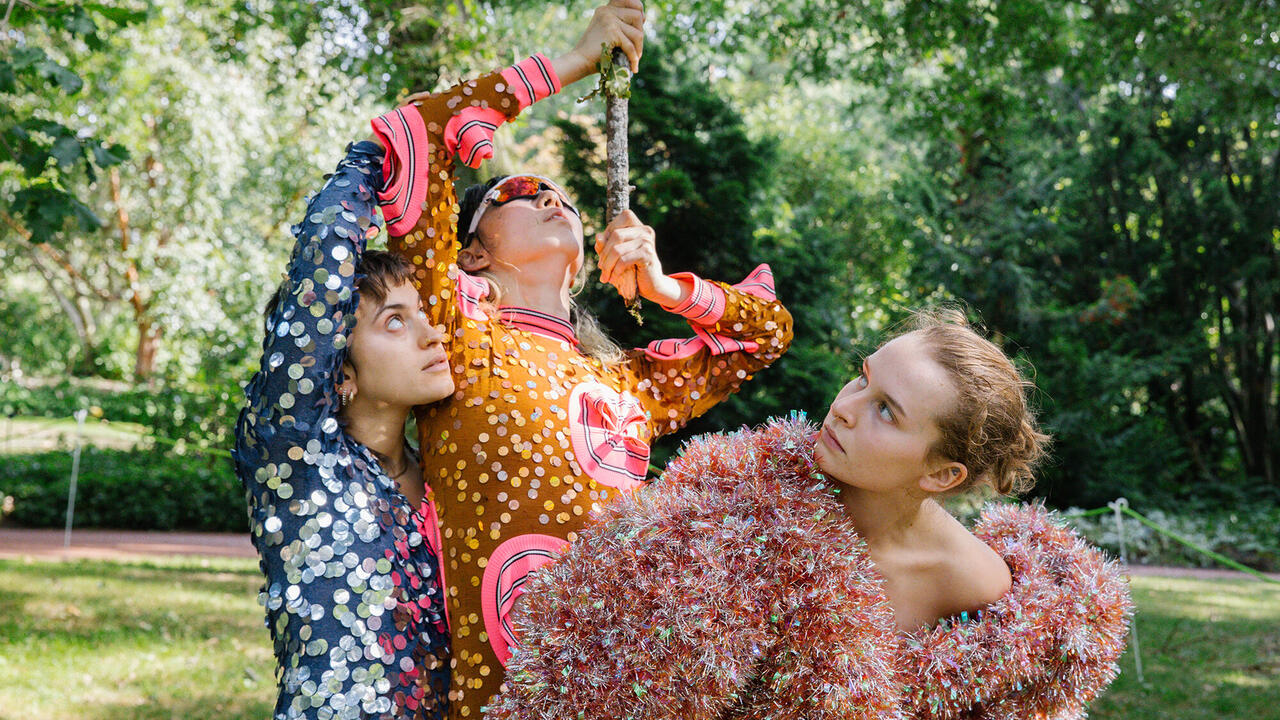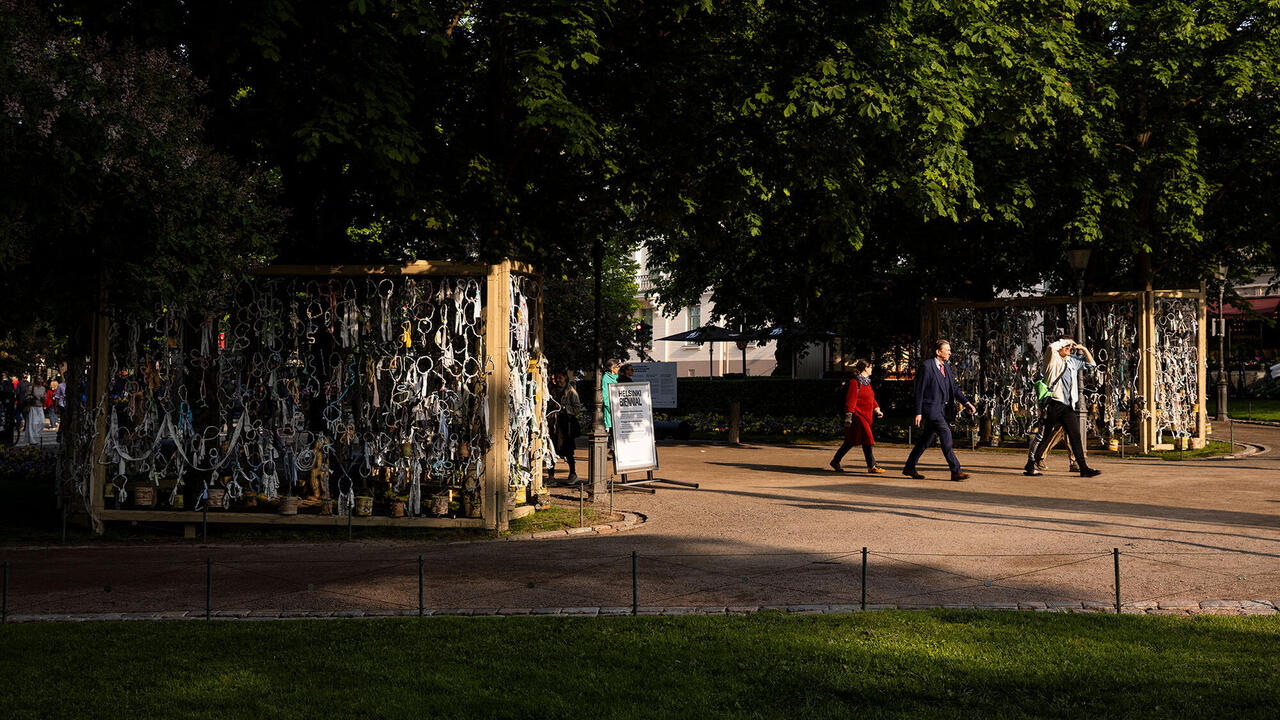24Back2 Mariko Mori
Oh to be smoother than a baby's bottom on a butter slide. The new glam is asserting itself in the worlds of fashion and pop music. Out with Kate, in with Nadja. Exit hip-hop, enter trip-hop. Goodbye substance, hello style! Art is seething with jealousy. Thank goodness Mariko Mori is doing something about it. In her first solo show, Mori puts the F-U in fun: OVERSIZED photos of guess what Mariko Mori in post-Barbarella getups. In front of which, encased in plastic time capsules, are the outfits themselves. The first feeling one got upon walking into the show, and this was consensus, was that we have finally found the cutest diva in the world. Think of a cross between Sherman and Barney (the dinosaur, not Matthew).
This amalgamation of fashion, ego and future shock is tempered by the almost accidental appearance of the Tokyo diorama which surrounds her. In the best works, like Subway (1994), the public reaction to Mori's performance adds the realism that I so desperately crave whenever I find myself inundated by the in-again-out-again world of fashion. In Subway, Mori found herself having to utilise a fish-eye lens because the commuters who thought they would be in the frame sheepishly slid out of the camera's view. Interestingly, despite the fact that there is a woman in a Space 1999 suit signalling to some far-off planet, nobody on the train is looking at her; instead they prefer to avoid involvement through consumption of more staid media (like newspapers or adverts). In New York, this would be taken for that trumped-up sense of blasé that Big Apple residents are always manufacturing. In Tokyo, this would ostensibly be interpreted as a signifier of the Japanese reserve. However, the fact that the doors of the train are open to reveal two gawking bystanders pointing at the sister from another planet says more about the actual complexities implicit in the Japanese psyche than might initially be conceived.
It is these windows onto Nipponity that provide the substance of Mori's style; as witnessed in Love Hotel (1994), exhibited in the back office of American Fine Arts, a problematic composition which makes one question the boundaries between art photography and fashion photography. Much like Wolfgang Tillmans' photographs, Mori's work tends to make one wonder whether the art world's current taste is for arty fashion or fashionable art. In Love Hotel, the cooing Mori wearing a chintzy silver and pink number is spread out on a circular bed. The television is tuned to a newscaster doing the talking head thing. While trying to make a comment on Tokyo's famous love hotels, the photo actually makes us wonder about the real connections between artists who photograph themselves, the meaty side of modelling and both the idea and actuality of prostitution. What exactly is being said, I'm not quite sure. This is also the stand I am inclined to take when documenting Mori's proto-feminist stance. While it is amusing to see Mori serving tea to commuters dressed as if she were a flight attendant on the Space Shuttle, this sort of commentary seems both reductive and very enlightening at the same time. Perhaps it is a signifier of the crossroads feminism has reached. How can one be aware and non-reactionary at the same time? Of course, in Warrior (1994), Mori says fuck it to the whole thing and goes for the Schwarzenegger-type gun. However, the little child in the forefront, entranced by the virtua-game he is seated in, couldn't care less if it was the best show of the month.
















